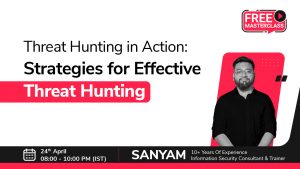Top 20 Incident Responder Interview Questions and Answers
Incident responders are the first responders to cyber threats and other security incidents. As an incident responder, your responsibility will include responding to security threats and making quick decisions to mitigate the damage caused by them. There are many opportunities for these professionals worldwide as organizations are focusing more on protecting their critical information systems. Since the Incident responder is an important and responsible position within an organization, the job interview can be quite challenging.
Here is a list of frequently asked incident responder interview questions that might help you in your preparation.

Question 1: What are the roles and responsibilities of an incident responder?
Answer: Incident responders are the first ones to deal with a security incident. They protect an organization’s valuable assets by taking immediate actions to detect, prevent, and mitigate cyber-threats. Besides this, incident responders’ duties also include making security policies, protocols, and reports to avoid potential security breaches.
Question 2: What type of security breaches you may encounter as an incident responder?
Answer: some of the common security breaches that an incident responder may encounter in his day to day work are:
- Cross-site scripting
- SQL injection attacks
- DoS attack
- Man in the middle attack
Question 3: What document do you need to restore a system that has failed?
Answer: When dealing with a system failure, a Disaster Recovery Plan (DRP) document is what you need to restore and recover the system functionalities. The document contains details of IT operations and steps requires to retrieve the data loss after a system failure.
Question 4: What is port scanning? Why is it required?
Answer: Port scanning is a method in which a network is scanned to identify open ports and services. Open ports give an incident responder a holistic view of the state of the network. By checking the ports and services, he can check the applications running in the background or the possibility of unauthorized access.
Question 5: What is a security incident?
Answer: It is an event that indicates that the sensitive data of an organization have been compromised or measures put in place to protect that data has failed.
Question 6: What is SIEM?
Answer: SIEM (Security information and event management) is an advanced threat detection and incident response system that helps an organization take quick preventive actions against a possible security attack. It provides real-time monitoring of the network and analysis of security events.
Question 7: What is the Difference between HIDS and NIDS?
Answer: NIDS and HIDS are types of Intrusion Detection System.
Network intrusion detection system (NIDS): NIDS operates at the network level and checks the traffic from all the devices connected in the network. It identifies specific patterns and abnormal behavior.
Host intrusion detection system (HIDS): It monitors only the system data and identifies suspicious activity on an individual host. HIDS takes snapshots of the system files, and if they change over time, it raises an alert.
Question 8: What is an automated incidence response?
Answer: Automated incidence response systems enable the incident response team to detect and respond to cyber threats and security incidents in real-time. Some of the examples of automated incidence response are as follows:
- Updating the firewall to block the malicious IP addresses automatically
- Isolating the infected systems to control the damage
- Collection of logs and incidents from all over the network and systems
Question 9: What is an incident trigger?
Answer: An incident trigger is an event signaling the possibility of a cyber threat. When incident triggers are generated, an incident responder must be aware that an attack is in process.
Question 10: What steps would you take after a cybersecurity incident occurs?
Answer: Following steps constitute the incidence response strategy of organizations nowadays:
Identification: In this step, the security incident is identified and reported to the higher authorities. IR team tries to find the source of the security breach.
Triage and analysis: Data is collected from various sources and analyzed further to find indicators of compromise.
Containment: The affected systems are isolated to prevent further damage.
Post-incident activity: This step includes documentation of information to prevent such security incidents in the future.
Question 11: How to detect whether a file has changed in the system?
Answer: The reason for changing a file could be unauthorized access or malware. One way to compare the change in files is through hashing (MD5).
Question 12: What is Advanced Persistent Threat? How to handle them?
Answer: An advanced persistent threat is an attack in which the attackers bypass an organization’s security posture and remain undetected in the systems or network. Advanced persistent threats have recently been responsible for the high-profile security breach incidents that have caused organizations a substantial financial or reputational loss. These threats are increasingly becoming common nowadays.
The advanced persistent threats can be prevented by establishing proper access & administration control. Regular penetration testing exercises and employee awareness campaigns can also mitigate the risks. To detect advanced persistent threat requires a dedicated incidence response team with skilled threat hunters who can uncover them through monitoring the network and user behavior.
Question 13: How would you detect a storage-related security incident in the cloud?
Answer: An incident responder can detect storage-related security incidents in the cloud by monitoring and thoroughly analyzing file systems and storage units’ metadata for malicious content.
Question 14: What are the best practices to eliminate an insider attack?
Answer: The best practices to eliminate insider attacks are as follows:
- Monitoring the employee behavior and systems used by them
- Conducting risk assessment regularly
- Documenting and establishing security controls and policies
- Implementing secure backups and disaster recovery plans
- Applying strict account management policies
- Disabling employees from installing unauthorized software and visiting a malicious website through the enterprise’s network
Question 15: To detect malicious emails, what steps would you take to examine the emails’ originating IP addresses?
Answer: Following are the steps to check the originating IP addresses of the emails while detecting malicious content:
- Searching IP address in WHOIS database
- Getting the IP address of the sender from the header of received mail
- Opening email to trace its header
- Now searching the geographical address of the sender in the WHOIS database
Question 16: What is Cross-site scripting (XSS) attack, and how to avoid it?
Answer: Cross-site Scripting: In the cross-site scripting attack, the attacker runs the malicious scripts on a web page and can steal the user’s sensitive data. By taking advantage of XSS vulnerability, the attacker can also inject trojan, read out user information, and perform specific actions such as the website’s defacement.
Ways to avoid XSS vulnerability:
- Encoding the output
- Applying filters at the point where input is received
- Using appropriate response headers
- Enabling content security policy
- Escaping untrusted characters
Question 17: What are some of your professional achievements or significant projects that you have worked in?
Answer: The interviewer asks this question to check whether you are a suitable candidate for the incident handler’s position. Recall your achievements in the past that showcase your strengths and skills. For example, tell him how you have successfully led the incidence response team in a critical situation and helped your organization reduce the impact of a cyberattack.
Question 18: How important is a vulnerability assessment?
Answer: vulnerabilities are loopholes or security gaps present in the network that an attacker can use to instigate DoS (Denial of Service) attack or get unauthorized access to sensitive information. Cyber-crooks are continuously looking for new exploitable vulnerabilities to break into the systems. Therefore, it is essential to keep assessing the network at regular intervals. The assessment can be done either by using a SIEM tool or by manual testing.
Question 19: What are some network security tools?
Answer: The best tools to deploy for a secure network are as follows:
- Network monitoring tool: SIEM software such as Splunk
- Packet sniffers: Wireshark, John-the-ripper
- Encryption tools: Tor, TrueCrypt
- Network intrusion and detection tools: Snort, Force point
Question 20: Are you a team player or prefer to work alone?
Answer: As an incidence responder, you may get an opportunity to work with other cybersecurity professionals within the incidence response team. Therefore, showing your willingness to cooperate with the team will be an add on. Demonstrate your teamwork abilities by giving examples from your previous experience. At the same time, do not restrain yourself from telling the interviewer that you can work alone on a project if required.
Conclusion
These questions give you a general idea of what type of questions you may expect during the interview. The questions and may vary depending upon the organization and level of the post you are applying for. It is recommended to prepare your answers and practice them before the interview to articulate your thoughts in front of the interviewer more efficiently.
To strengthen your base in incident handling and response, get yourself enrolled in our EC-Council Certified Incident handler (ECIH) training program.




 1800-843-7890 (India)
1800-843-7890 (India) 
